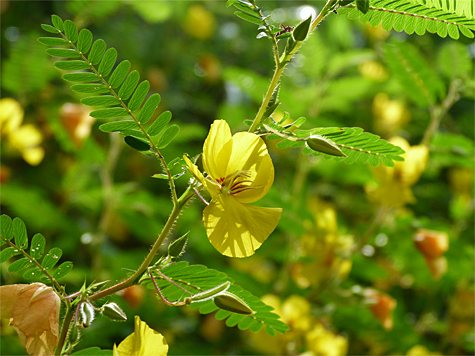
While we wait for fall to arrive (we’ve already passed a turning point in the seasons) I thought I’d show you some images of what’s happening now. The partridge pea above has been groomed and readied for cloudless sulphur butterflies to come along and lay their eggs on the plant. So far I’ve seen not a one of the large yellow butterflies. I will keep looking.
Speaking of butterflies, I spotted a least skipper flying about the smartweed in Explore the Wild. This is a very small butterfly with about a 1 inch wingspan, but it’s surprisingly noticeable as it skips about the wet grasses along the edge of the water, which is were it’s usually found.
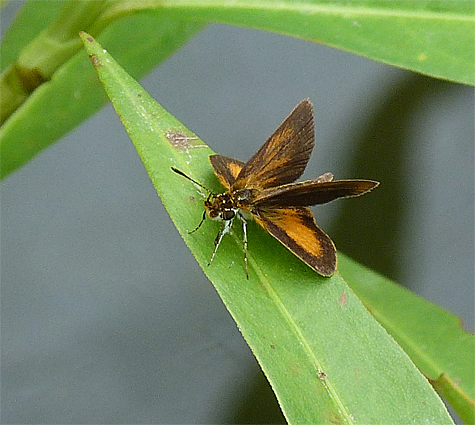
I spied a green tree frog tucked up under one of the umbrellas at the Red Wolf Enclosure.
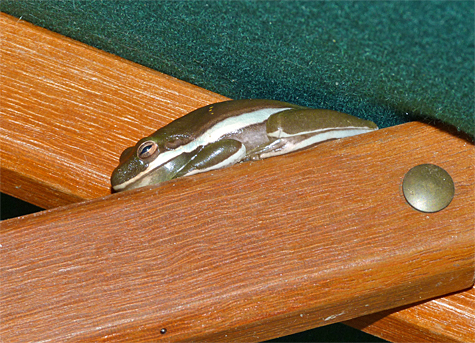
Speaking of frogs, while standing next to the vending area in Explore the Wild checking the weather radar on the iPhone, I saw what looked like a pickerel frog hop across the pavement and into the tall grass at the edge of the wetlands. Seconds later a black racer, in hot pursuit, followed the frog’s trail. As the snake’s head entered the grass, it paused, then quickly moved forward, disappearing into the grass. Not more than a minute later the snake emerged from the grass and back to where it had come from. I could not discern a bulge in the snake’s profile, so I don’t think it caught what it was after.
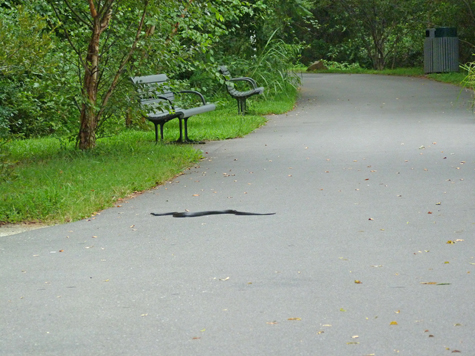
While on the subject of snakes, on the other side of the path, and twenty feet or so beyond the racer in the above photo, there lies a favorite resting spot for water snakes. They can be difficult to see as they coil up in the tall grass, but if you persist you may spot one or two.
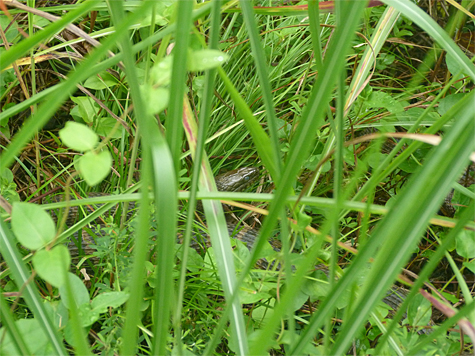
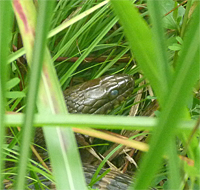
If you had trouble locating the snake in the photo, the head can be seen dead center in the above photo and the photo at your right.
On the other side of the Wetlands, under the redwoods and cypress trees that line the boardwalk, another northern water snake peeks out of a hole at the base of one of the redwoods. The snakes seem to spend much time cooling off underground among the roots of the trees.
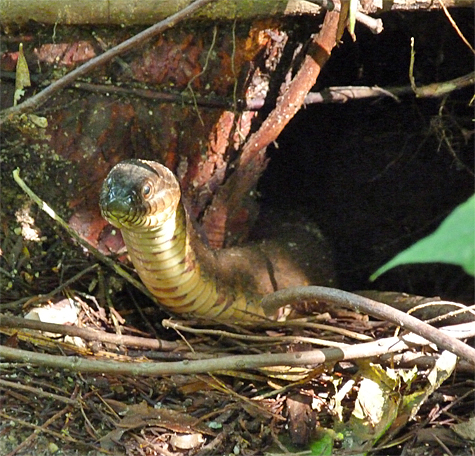
Finally, the next photo was taken about two weeks ago but is still relavent. Although many birds are beyond the fledgling stage and are actually preparing for migration (some are already on their way south) the catbirds will be here for at least another month.
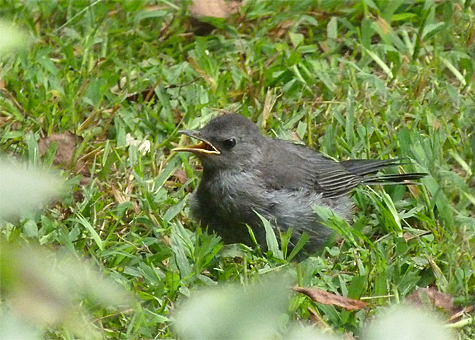
As you’re walking around the outdoor loop through Explore the Wild and Catch the Wind, keep an eye out for these and other critters along the way. There’s much going on around you, but you won’t see it if you don’t look.
Have fun!